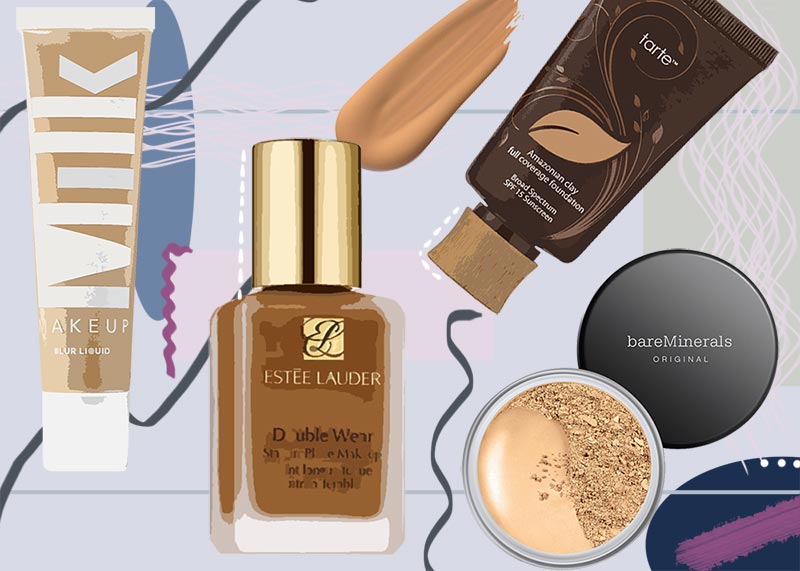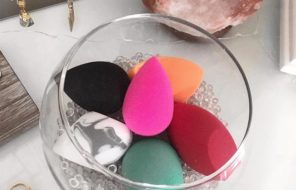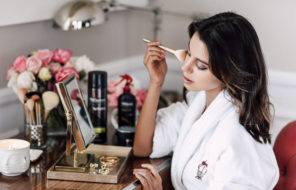Foundations are the base for any full makeup look, so you cannot call yourself a makeup lover without at least having one or two holy-grail foundations. There are different types of foundations, depending on their texture. While liquid foundation may work best for all skin types, certain foundation types target certain skin types. This comprehensive guide covers everything you need to know about all the different types of foundation makeup, including all the shapes and forms foundations take.
In this article:
- Liquid Foundation
- Cream Foundations
- Powder Foundations
- Cushion-Compact Foundations
- Mousse Foundations
- Compact or Stick Foundations
- Spray Foundations
- Alphabet Creams
- Tinted Moisturizers
Liquid Foundation
This is the most common texture for foundations, which is unsurprising because it is very versatile and quite easy to work with. The liquid texture works for all skin types, and it can give anything from ultra-light sheer coverage to perfectly matte high coverage.
There are two main types of liquid foundations: water-based, which tend to give a more matte finish and usually work better for those with oily skin (sometimes they’re advertised as cream-to-powder, liquid-to-powder, self-setting, or mattifying), and silicone-based, which tend to feel creamier and can work for both dry skin and oily skin (depending on the kind of silicone used).
Water-based foundations are self-setting, which means they don’t necessarily require powder, although you do have to blend them into the skin quickly before they set. Silicone-based foundations usually require powder to be set.
There are also some oil-based foundations, especially in the natural skin care world, and those are usually better for those with dry skin.
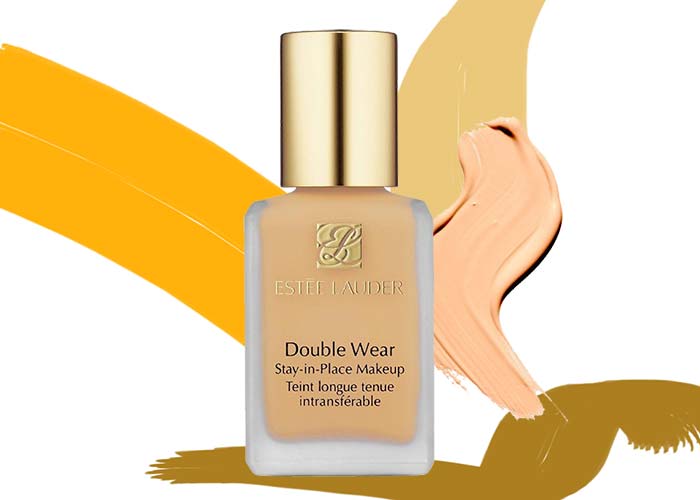
Cream Foundations
Cream-based foundations are the thicker cousins of liquid foundation, with a heavy texture. They usually provide higher coverage, and are great for anyone who likes a heavier makeup look.
Cream-based foundations are often longer lasting than their liquid counterparts, and they usually give a satin-finish to the skin. They tend to have no water content, and are mostly made of oils and waxes, along with pigment (and occasionally some silicone).
Cream foundations are best for those who like a lot of coverage, and who have a combination skin type that doesn’t veer too strongly either to the dry or to the oily direction. Cream foundations can come in a pressed pan form or a stick form.
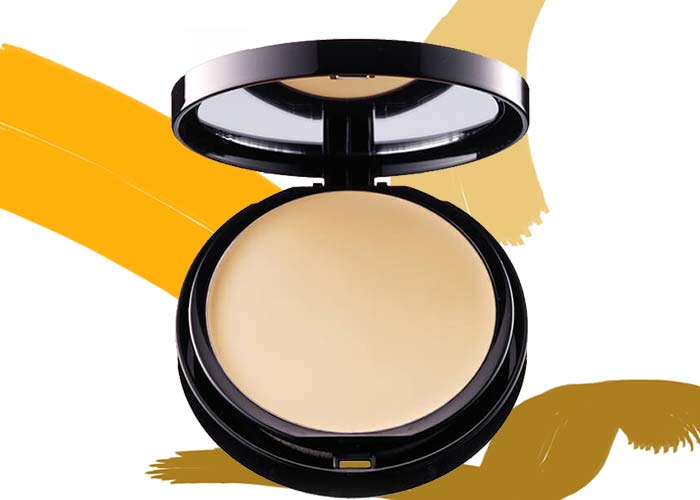
Powder Foundations
With a fairly light coverage, and a mattifying effect, powder foundations have become the favorite choice for natural beauty aficionados and those who like easy, low-maintenance routines. Those who need a lot of coverage or who have skin that leans towards dry should stay away from powder foundations.
There are two types of powder foundations – pressed-powder foundations that are great for normal, dry and oily skin types, and loose powder foundations, which are meant to set the makeup, especially being an excellent choice for those with oily skin.
If you like a ton of coverage, you can even use a powder foundation to set a cream or liquid foundation. While I prefer loose powder foundations, since they tend to include more product with better coverage, a pressed powder foundation is undeniably neater and easier to use.
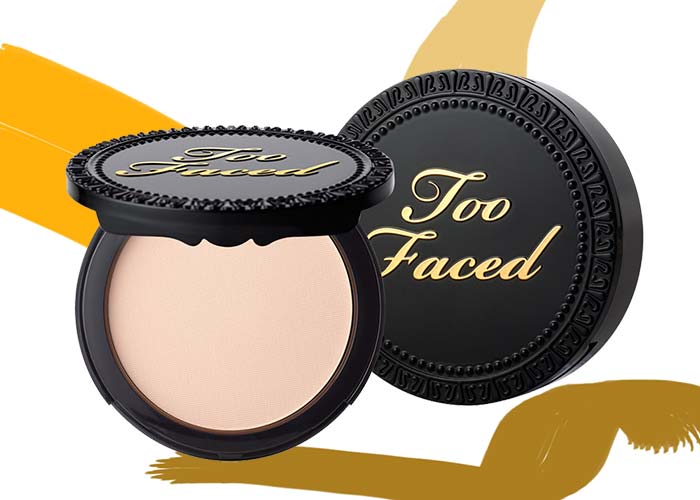
Cushion-Compact Foundations
Those who are looking for a liquid texture of foundation, but need a product that is easier to apply on the go can consider getting a cushion-compact foundation. The outcome is a light or medium coverage, hence the product is excellent for those with a flawless skin.
The good thing is that cushion foundations come with an applicator that you can use to apply and blend the product easily.
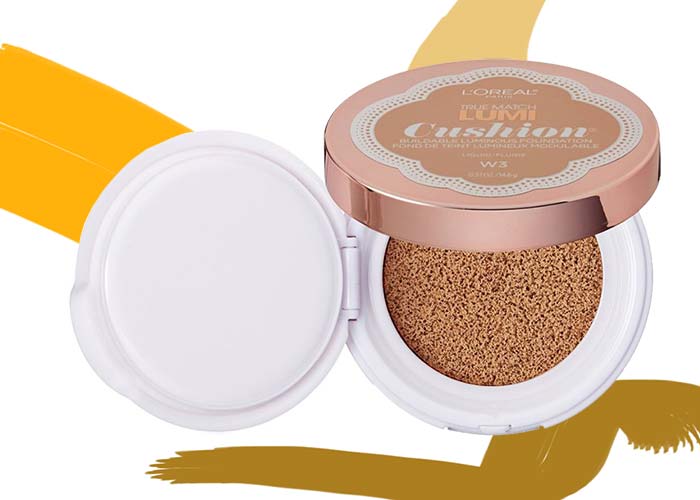
Mousse Foundations
Mousse foundations are mostly a variation on liquid foundations. A liquid foundation becomes creamier when it is whipped with air, turning into a mousse, which offers a less messy application.
Different mousse foundations will work for different skin types, depending on whether they are water- or silicone-based. Throughout the article, whenever I use the term “liquid foundation”, know that the same directions apply for a mousse one.

Compact or Stick Foundations
Compact or stick foundations have become popular just recently, and they are just perfect for oily and thicker skin types. The best thing about this type of foundation is that you easily direct the right amount of product to the areas you desire. They are also ideal for carrying around with you while traveling.
Stick foundations are also amazing when it comes to using your advanced application skills to contour. You just need to press it on your skin, depositing the amount of product needed, and start blending it with a foundation brush, a wet makeup sponge or just your clean fingers.
Use the darker shades along the hairline, on the sides of the nose and under the cheekbones, while keeping the lighter tones for the higher points on the face – the center of the nose, the chin, cheekbones and the center of the forehead, as well as under the eyes.
Those with dry and mature skin should stay away from stick foundations, as they might end up making your skin appear blotchy and even drier, emphasizing the wrinkles of the mature skin.
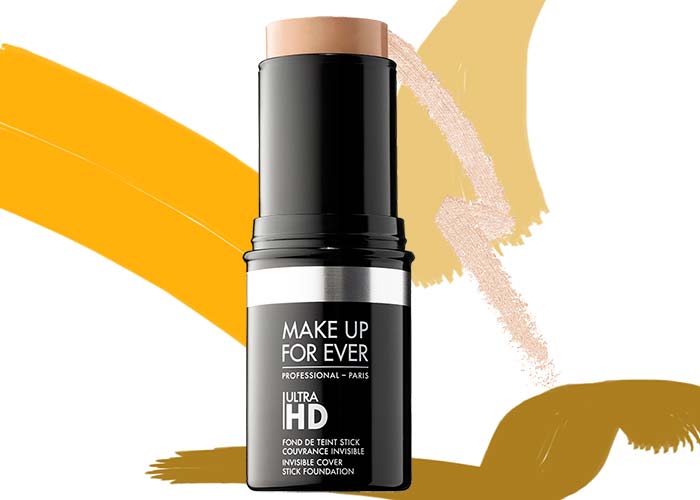
Spray Foundations
These liquid foundations have a very thin consistency, which means they can be dispensed through a spray applicator. As such their coverage tends to be lighter (but still buildable!), and almost anyone who has tried one will tell you that they are best sprayed on a brush or sponge and then applied to the face, which means all the airbrush comparisons you hear about are just a marketing gimmick.
Depending on the formula, spray foundations can work for just about any skin type, and should be treated like any other liquid foundation.
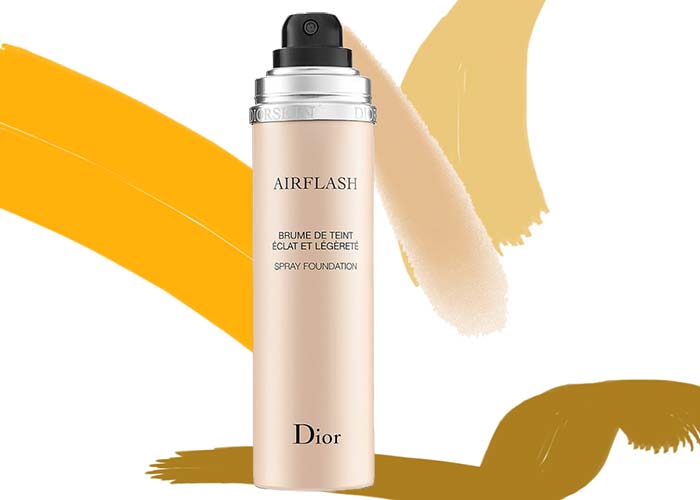
Alphabet Creams
Usually showing up as BB creams or CC creams, these are two-in-one foundation and skincare items that look very similar to liquid foundations. They have different kinds of properties and finishes, and they normally (though not always) provide lighter coverage than a foundation would.
You can apply your BB or CC creams with your fingers, a makeup brush or a wet sponge.
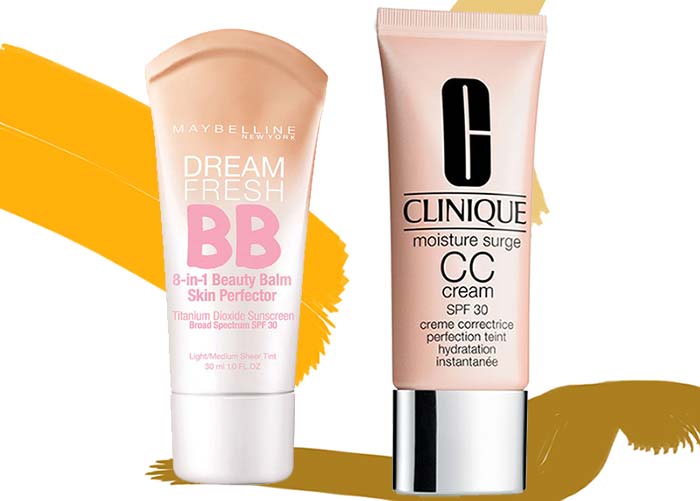
Tinted Moisturizers
Tinted moisturizer is one of the lightest forms of foundations, perfect for those, who have a flawless skin and just need that touch of color, sun protection and a bit of moisture. Never expect a great coverage from this type of foundation, as it’s a two-in-one product, acting both as makeup and skin care.
Tinted moisturizers are ideal for dry skin, although those with normal skin types might also love to get it especially for summer. Those with extra dry skin are advised to layer it with a regular moisturizer.
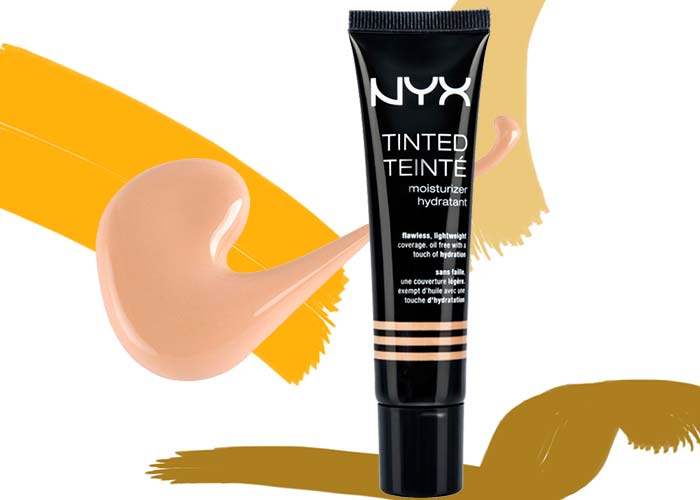
Photos Sephora

